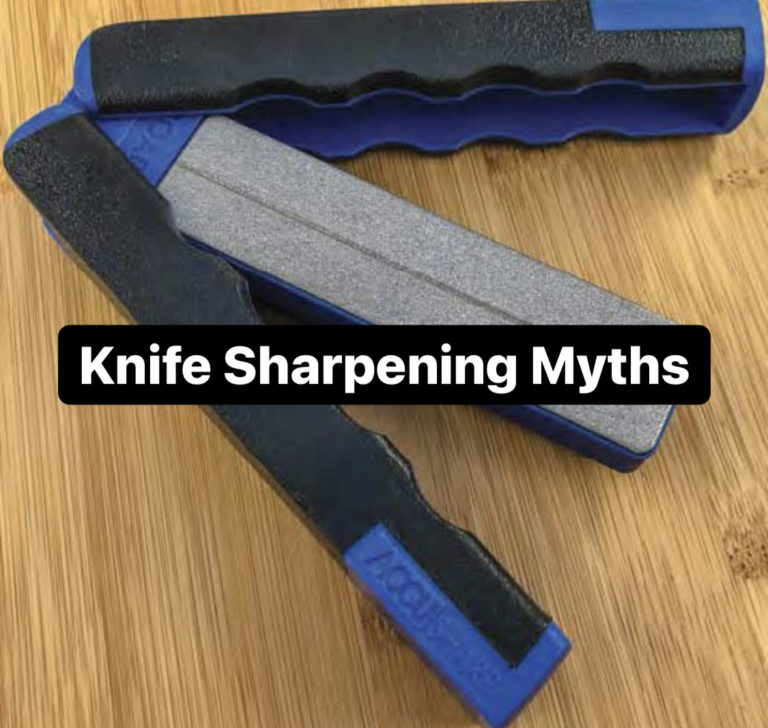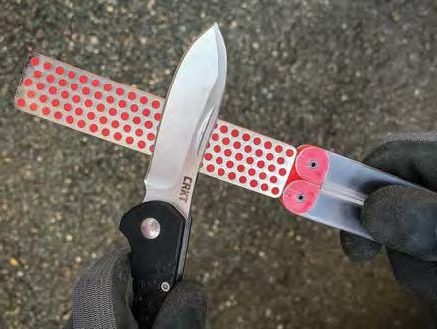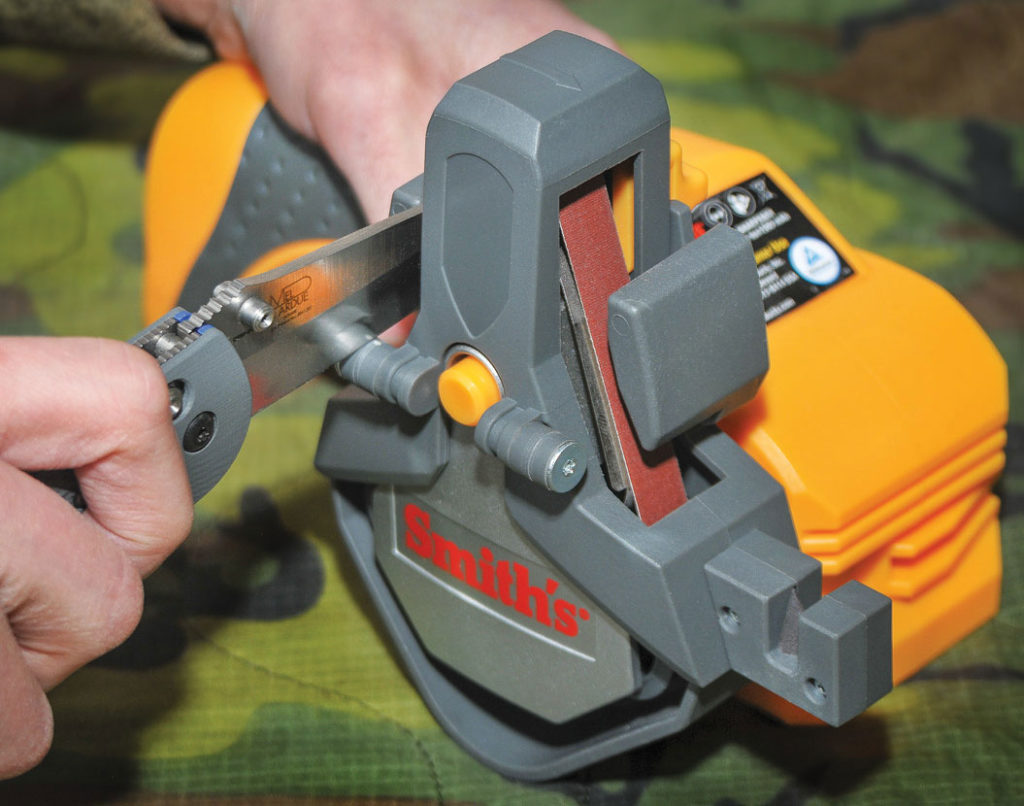
Knife sharpening is, on its surface, a simple thing. That hasn’t prevented a few myths from popping up, though. Here are five knife sharpening myths, busted.
Myth: You Need Expensive Knife Sharpening Tools
Fact: Quality knife sharpening stones, sticks, oils, and other gizmos can help quite a bit. However, you can’t buy your way to sharpening success. Technique is 90 percent of it. Humans have been sharpening knives without manufactured products for centuries. How did they do it? They knew how to work an edge.
Here are knife sharpening tips for the uninitiated. All you need are some junky practice knives, a sharpening stone, a Sharpie and some patience to get started.
Myth: Diamond-Infused Knife Sharpening Stones Last Forever

Fact: Diamonds might be forever, but knife sharpeners are a different story. Here’s DMT with the answer:
For those that use stones on a daily basis and maintain them properly, the diamond will likely last for a few years. For those that use them less frequently, it’s likely the stone will last from ten to twenty years.
Still, you can’t beat the value of a $40 knife sharpener that gets the job done over several years.
Myth: Using a Sharpening Stone Dry Works Faster Than Using It Wet Because It Removes More Metal
Fact: Don’t confuse friction with progress. Adding a little water or oil to maximizes your effort with every stroke on a knife sharpening stone. Remember, knife sharpening isn’t necessarily about scraping metal away; it’s about refining or creating an edge.
SharpeningSupplies.com ran a test exploring this exact knife sharpening myth. The results?
The results were clear. Use your stones wet. The stones used wet worked far better than the ones used dry.
That isn’t to say that every knife sharpening stone needs to be used wet. It’s more that this is not an either-or proposition. Some can be used dry, too, as Cutlery-Hall-of-Fame Member Dan Delavan demonstrates in this video.
On that note, if you use water on a stone, always use water. If you use oil, always use oil. Oil and water don’t mix, and that goes for knife sharpening, too.
Myth: Electric Knife Sharpeners Can Sharpen Almost Any Knife

Fact: Electric knife sharpeners can sharpen most knives, but that doesn’t mean that they should.
Electric knife sharpeners have fixed angle positions. If your favorite knife’s edge is set at 20 degrees, and the electric knife sharpener is set at 15 or 30 degrees, you might need a new favorite knife.
The type of grind is also left unconsidered with electric knife sharpeners. For example, a blade’s convex edge will be reset by a sharpener tuned to a flat grind.
Edges aren’t set by accident. They are tied to the purpose and performance of a knife.
Matching the knives you intend to sharpen to the features of an electric knife sharpener is important. So is learning how to use manual knife sharpeners!
Myth: Diamond Knife Sharpeners Aren’t Really Made Out Of Diamonds — That’s Just Marketing
Fact: Diamond knife sharpeners use real diamonds.
On first glance, this knife sharpening myth seems to make sense. Walk into a jewelry store and you’ll see diamonds with four-figure price tags. A sporting goods store, on the other hand, offers diamond knife sharpeners for less than 100 bucks. Maybe you should’ve reconsidered financing that engagement ring.
Knife sharpening companies often use monocrystalline diamonds, which are not the same as jewelry-grade diamonds. Here’s DMT again with the explanation:
Monocrystalline diamonds are diamonds of high quality that are not fractured. These diamonds are uniformly sized. DMT® bonds these to a nickel backing to provide a long lasting very flat surface. The alternative is to use polycrystalline diamonds. These diamonds are fractured and will not wear as long as the higher quality monocrystalline.
Half Myth: When Sharpening, Use an Equal Number of Strokes on Each Side
Fact: This one could cut either way. It’s right on the line of myth versus reality.
It’s generally accepted that an equal number of strokes on each side of the blade will result in an even edge. However, hands don’t work exactly the same way in both directions. As Delavan states in the video above, most people’s backhand stroke isn’t as sturdy, and that could result in an uneven edge.
The trick is to compensate with a few more strokes on that backhand.
 NEXT STEP: Download Your Free KNIFE GUIDE Issue of BLADE Magazine
NEXT STEP: Download Your Free KNIFE GUIDE Issue of BLADE Magazine
BLADE’s annual Knife Guide Issue features the newest knives and sharpeners, plus knife and axe reviews, knife sheaths, kit knives and a Knife Industry Directory.Get your FREE digital PDF instant download of the annual Knife Guide. No, really! We will email it to you right now when you subscribe to the BLADE email newsletter.








The Electric Knife Sharpeners Can Sharpen myth is amazing.
I really impressed by this article… Thanks for sharing it. No doubt its very useful info for those who wants to get info about knife sharpener.
knidfe
I really impressed by this article… Thanks for sharing it. No doubt its very useful info for those who wants to buy knife.